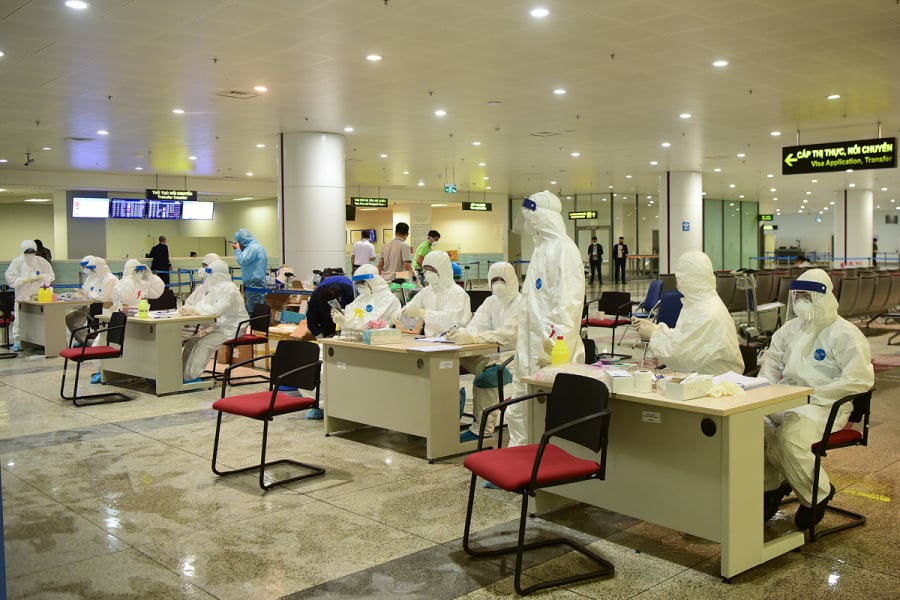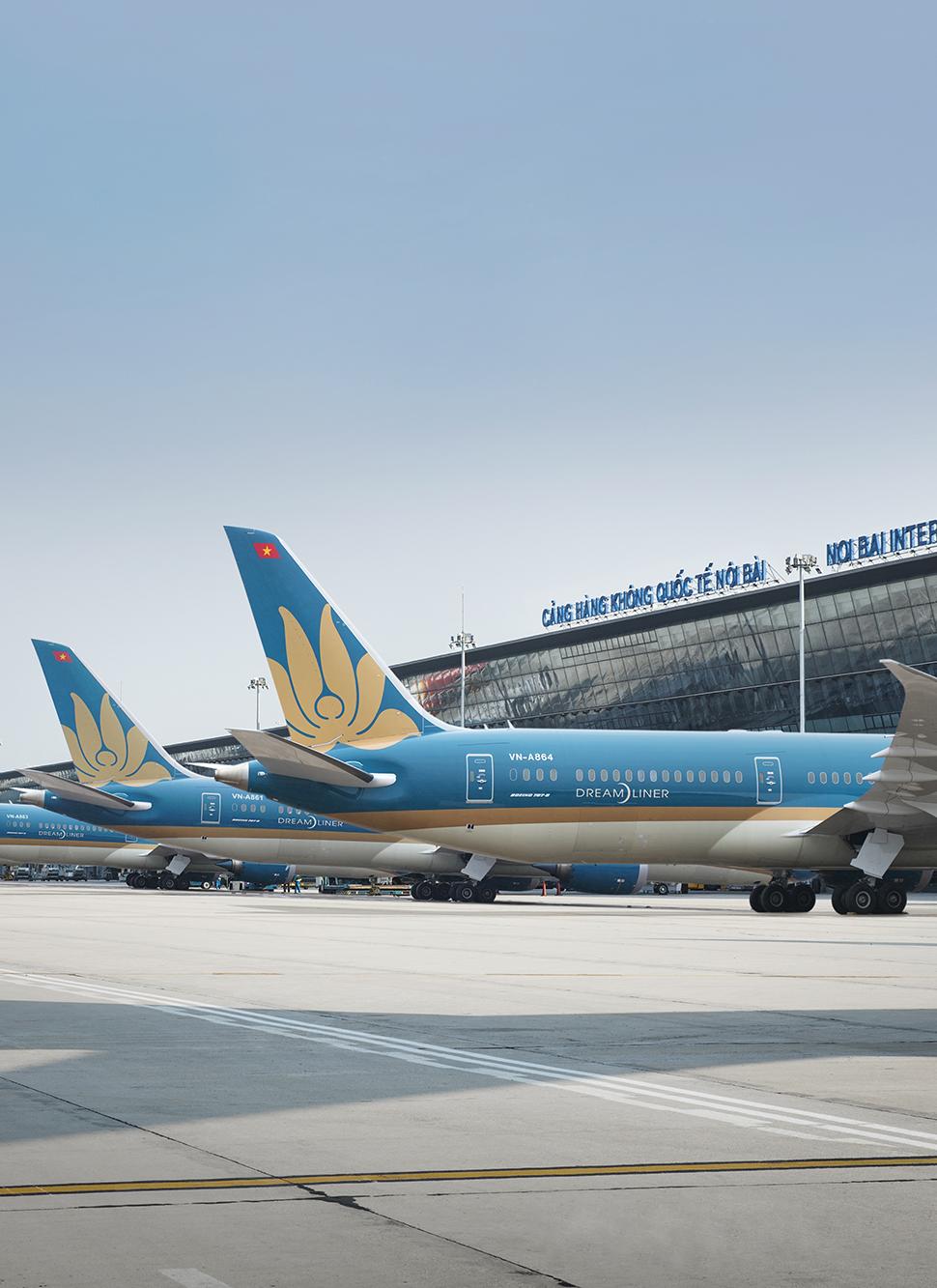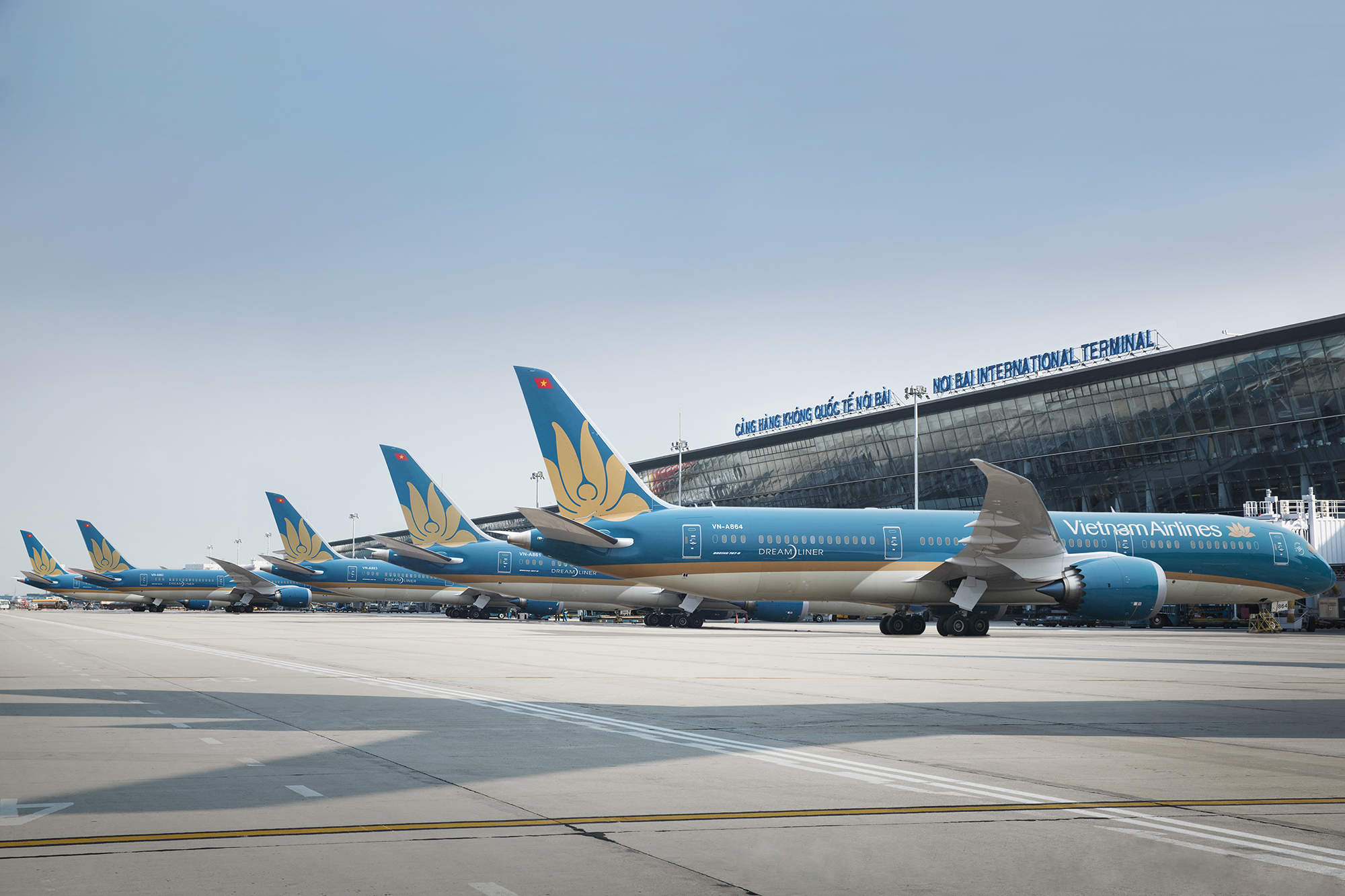According to the plan to restore international flights sent by the Civil Aviation Authority of Vietnam to the Ministry of Transport, there are 6 international flights proposed to reopen from September 15, including flights from Vietnam to Japan, South Korea, Taiwan, China, Cambodia and Laos. To ensure quarantine testing capacity, international flights to Vietnam will be evenly distributed on weekdays, minimizing the number of flights landing at one point per day.

Six international flights are expected to reopen from September 15.
With flight pathVietnam - ChinaTwo flights per week are proposed for the Ho Chi Minh City - Guangzhou route. In which, Vietnam will assign Vietnam Airlines/Pacific Airlines to operate one flight, and China will operate one flight. The expected number of quarantined passengers in Ho Chi Minh City is a maximum of 540 passengers per week.
With flight pathVietnam - Japan, The Civil Aviation Authority proposed to resume flights from Hanoi to Tokyo with a frequency of two flights/week and from Ho Chi Minh City to Tokyo with a frequency of two flights/week. Each country will operate one flight on each route.
Vietnam Airlines plans to operate the Hanoi - Tokyo route and Vietjet Air the Ho Chi Minh City - Tokyo route. The maximum number of quarantined passengers in Hanoi and Ho Chi Minh City is about 560 per week.
Flight routeVietnam - KoreaVietnam Airlines plans to operate the Hanoi - Seoul route with a frequency of one flight/week, while Vietjet operates the Ho Chi Minh City - Seoul route with a frequency of one flight/week. The maximum number of passengers expected to be quarantined in Hanoi and Ho Chi Minh City is 650 passengers/week in each city.
Flight routeVietnam - TaiwanVietnam Airlines will operate flights from Ho Chi Minh City and Vietjet from Hanoi. The expected number of quarantined passengers per week in Hanoi is 620, and in Ho Chi Minh City is 700.
With flight pathVietnam - Cambodia, the two countries agreed to operate the Can Tho - Phnom Penh route with a frequency of one flight/week for each side. The number of quarantined passengers in Can Tho is expected to be 400 passengers/week.
Flight routeVietnam - Laos, The Lao Civil Aviation Authority has confirmed via email that it has received a document from the Vietnamese Civil Aviation Authority regarding the reopening of the flight route, but has not yet responded specifically. In case the Lao side agrees with Vietnam's proposal on frequency, the maximum number of passengers expected to enter Hanoi is 350 passengers/week.
With the above flights, it is expected that nearly 5,000 passengers entering the country will need to be quarantined each week in Hanoi and Ho Chi Minh City.

Upon entry, passengers will be tested quickly and must stay at locations determined by the Provincial/City People's Committee and pay a fee.
Also according to the proposal of the Civil Aviation Authority, passengers coming to Vietnam must have been in the partner country/territory for at least 30 consecutive days before taking the flight, and transit passengers are not accepted. In addition, passengers must have a negative nCoV certificate issued within three days before the expected flight date.
Upon arrival at Vietnam airports, passengers are tested quickly, with the cost of testing covered by the airline. Passengers entering the country must stay at locations determined by the People's Committee of the province/city and pay a fee.
The Civil Aviation Authority of Vietnam has proposed that the Ministry of Health publish medical quarantine requirements for passengers upon entry and publish a list of domestic real-time PCR testing laboratories to notify partners and passengers because passengers departing from Vietnam need a Covid-19 confirmation certificate.
Currently, countries have applied medical quarantine policies for incoming passengers. For example, in China, passengers arriving here must have a negative certificate for nCoV at a facility designated by the Government where the passenger first departed, and be tested within five days before departure. In addition, passengers must install a mobile application for monitoring and be quarantined for 14 days with a fee. Meanwhile, passengers entering Korea must self-isolate at home or a designated facility and must install a mobile application for monitoring.

 VI
VI EN
EN

































